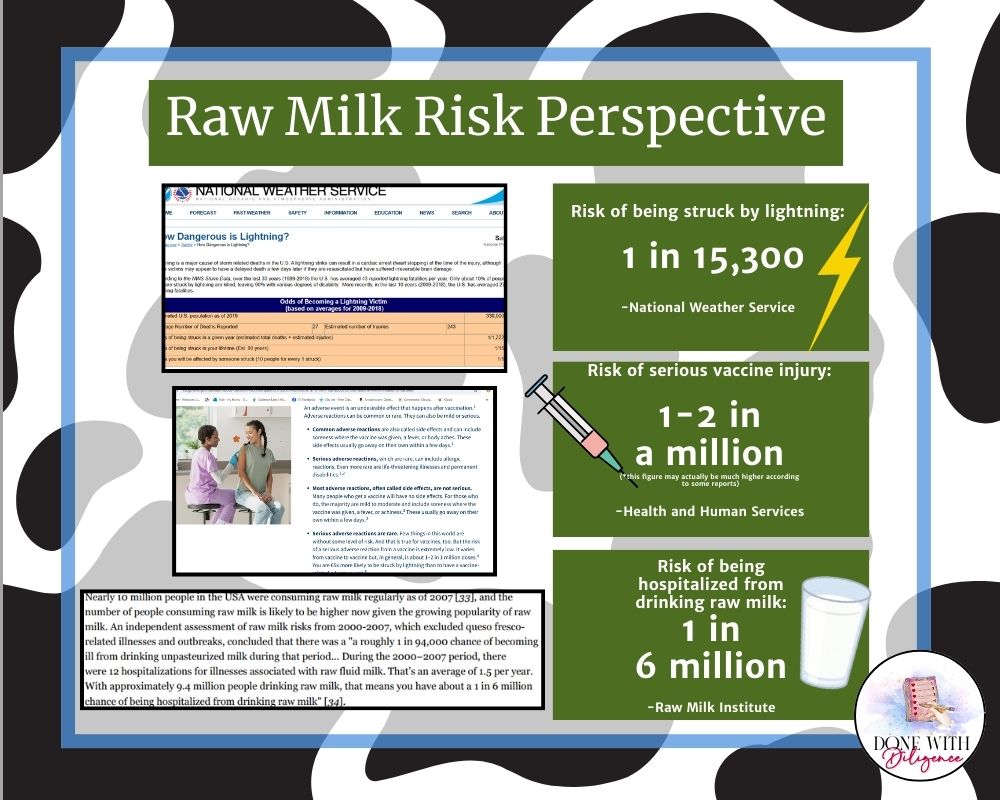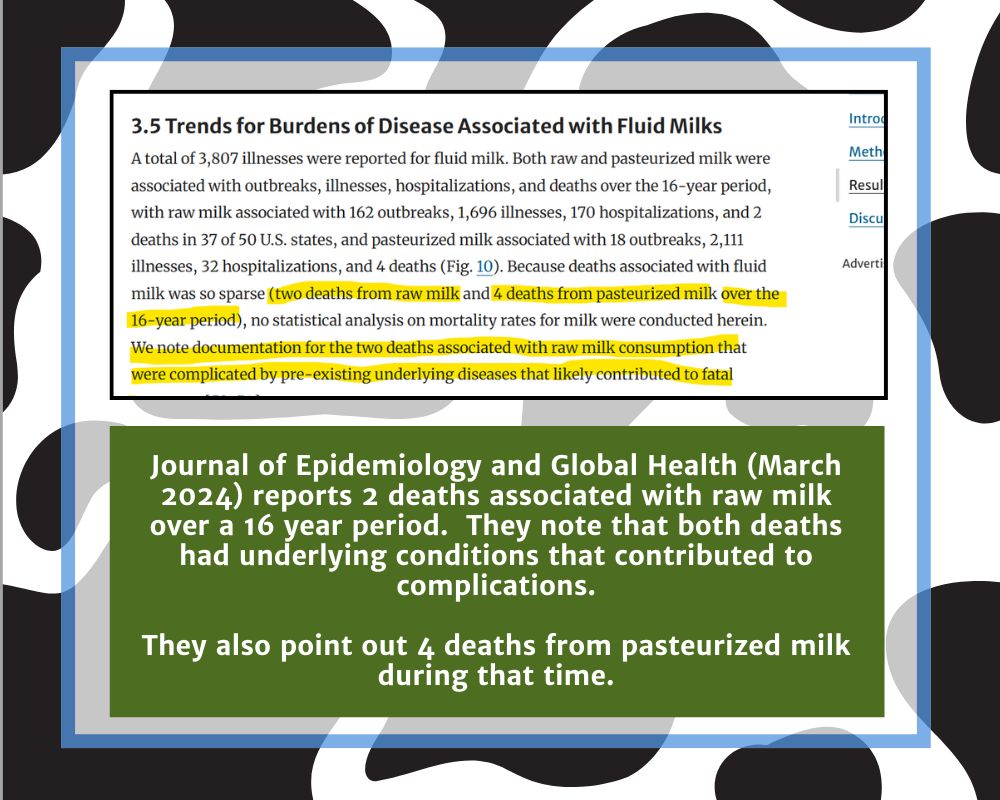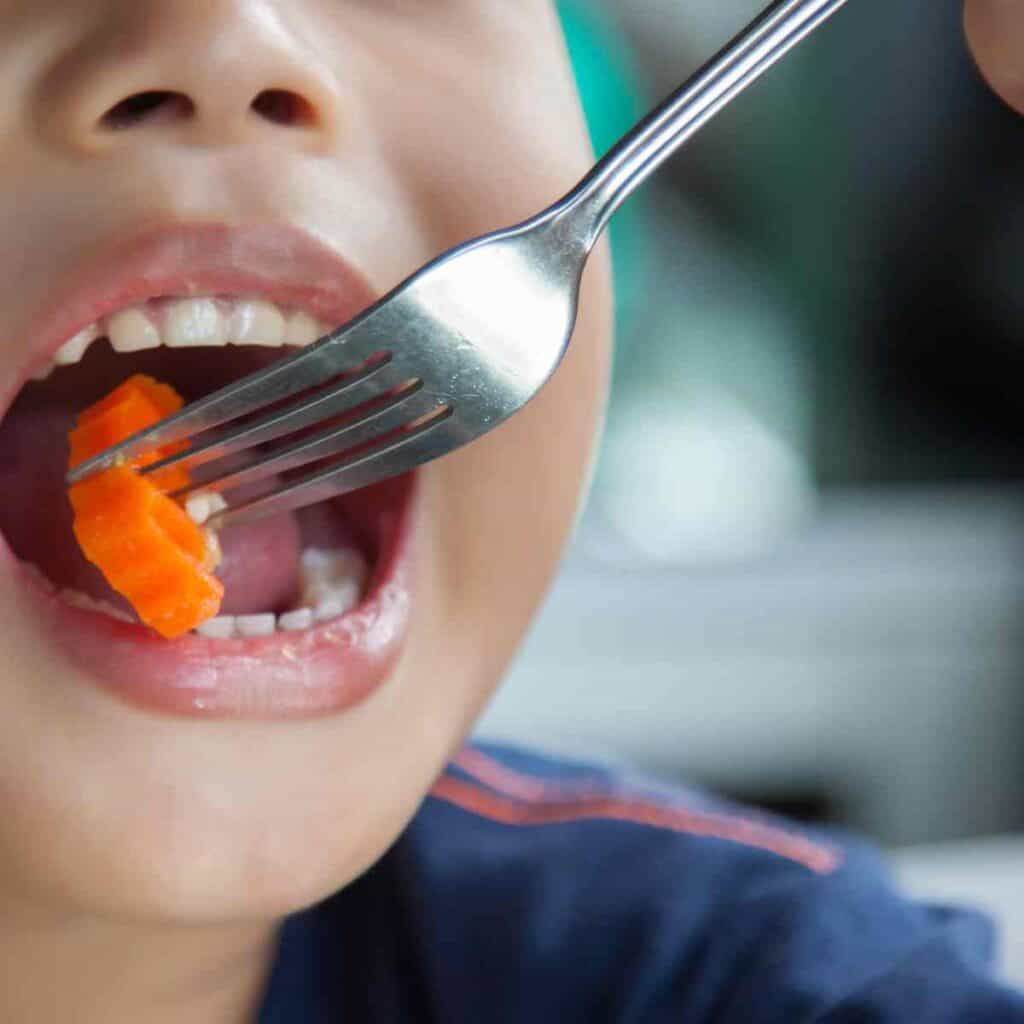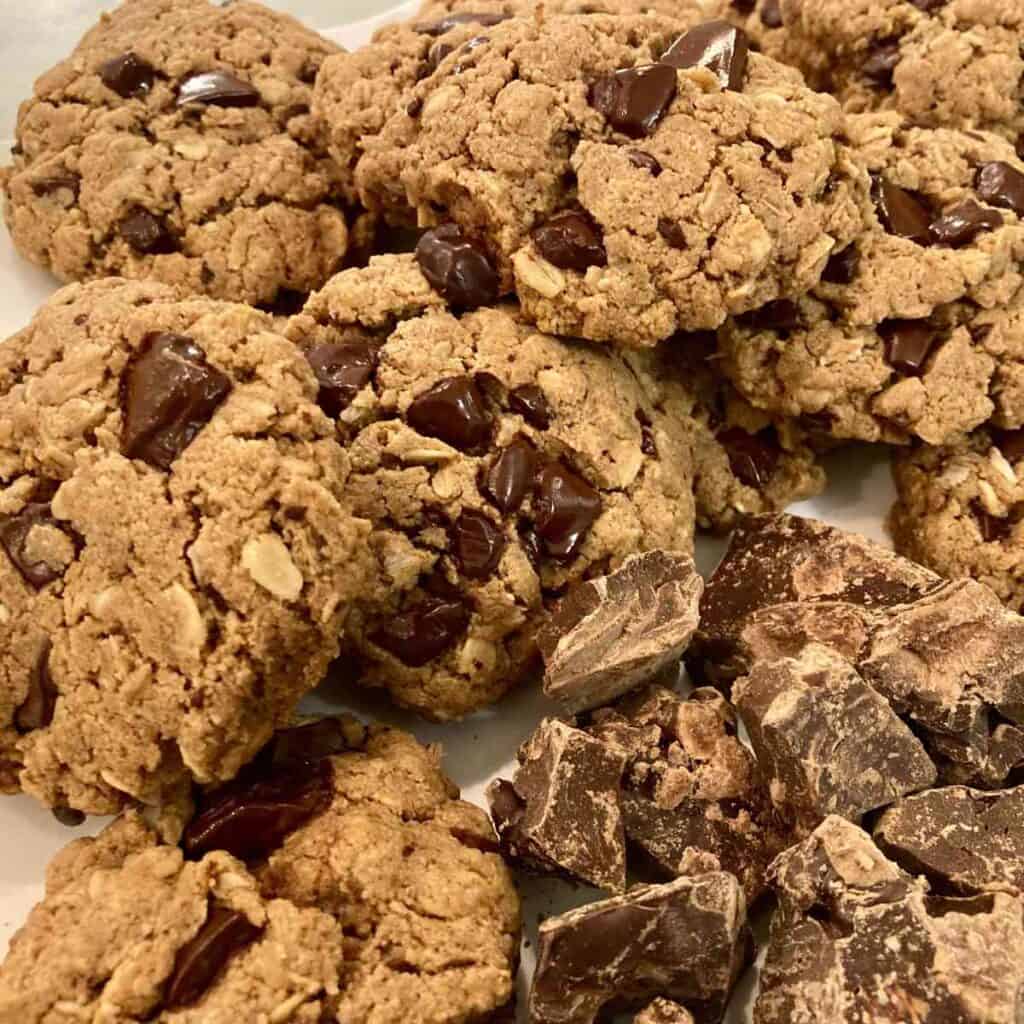Our family made the switch to raw milk, and we haven’t looked back since! I want to share with you the top reasons we made the switch and share some research regarding it’s safety and overall benefits. So let’s MOO-ve right along, shall we? (I apologize for the corny cow joke, but I couldn’t resist!)
(This post contains affiliate links. They are intended to help you find the products mentioned. You can read more in my Policies and Disclaimers.)
What is Raw Milk?
Let’s start by defining raw milk. What is it? In simple terms, it’s milk straight from the cow. It has NOT been homogenized or pasteurized, and it’s in its most natural form. Typically raw milk is purchased directly from a local farm where healthy cows have been grazing in fields eating grass, just like God intended them to do!

The homogenization process involves using high levels of pressure to break down the fat globules in milk from their original size of about 18 micrometers to about 2 micrometers. This break down explains the uniform color and uniform texture in milk purchased from the grocery store. Raw milk will have various shades of white, off-white, and yellowish-white. It will also have a thick layer of cream rise to the top.
The pasteurization process involves heating milk to high temperatures (about 161 degrees), leaving it at that temperature for at least 15 seconds or longer, then putting it through a rapid cooling process. The CDC claims that this process of heating milk kills harmful bacteria.
Organic milk is not the same as raw milk. Organic milk comes from cows who have been fed an organic diet. They may still live in crowded stalls and never eat real grass. And their milk has still been subjected to the homogenization and pasteurization processes.
What are the Nutritional Benefits of Raw Milk vs Pasteurized Milk?
Advocates of processed milk will argue that homogenization and pasteurization don’t remove any of the vitamins or nutrients from the milk, suggesting that it doesn’t change it in any way. However, that assertion is simply not true.

Dr. Axe, a certified Doctor of Natural Medicine, says, “Raw milk is truly one of the most nutrient-dense foods in the world and has a nutritional profile unlike any other food, explaining the many raw milk benefits.” (source). So what’s in it? Let’s compare raw milk to conventional milk to see the difference.
- Calcium- Everybody thinks of calcium when they think of milk, but let’s take a deeper dive. One glass of raw milk contains about 300 milligrams of calcium, which is about 30% of your daily needs. There is a 21% reduction in calcium levels in conventional milk, and there are also absorption issues. This study found that heating milk to high temperatures impaired the ability to utilize dietary calcium.
- Vitamin A, Vitamin B, Vitamin C, Vitamin D, and Vitamin E- Milk is full of vitamins that are important for everyone, but especially young children. However unprocessed milk offers the biggest bang for your buck! Vitamin levels are depleted by up to 77% after they have been processed. (source)
- Iron- One cup of milk contains 6% of the daily recommended amount of iron, but the pasteurization process reduces iron content by 66%. (source 1, source 2).
- Fat– 8 grams per cup
- Protein– 8 grams per cup
- Minerals– Milk contains 22 minerals that are essential, including the following: calcium, magnesium, phosphorus, potassium, sodium, zinc, and iodine. It also contains trace minerals. (source)
- Enzymes– Milk contains 60 enzymes that help make sure all of the minerals and nutrients in milk are absorbed. Some of the enzymes also help keep illness-causing bacteria in check. Pasteurization destroys many of these enzymes (source).
- Beneficial Bacteria– Raw milk contains a wide-array of good bacteria that help develop the gut microbiome, help with mineral absorption, and help keep dangerous bacteria in check. (source)

For more on the health benefits of raw milk, Sally Fallon from the Weston A. Price Foundation is always a great source. You could start here. She does a great job of explaining how heating milk changes its nutritional value.
What Does the Research Say about Raw Milk’s Medicinal Benefits?
The Raw Milk Institute explains, “From 1893-1999, the American Association of Medical Milk Commissions (AAMMC) certified clean, safe, raw milk for human consumption and even medical therapeutic use. This certified raw milk was recognized to be of therapeutic benefit for infants, children, and adults. This milk was used effectively in hospitals around the United States and was used to treat a wide variety of chronic diseases, including cardiovascular disease, renal disease, liver disease, hypertension, edema, asthma, arthritis, tuberculosis, and diabetes.” (source)

Both raw cow milk and raw goat milk have been the topic of many scientific studies. The potential benefits will knock your socks off! Let’s take a look at a few more studies on raw milk gathered by the Raw Milk Institute (source).

This study from the Journal of Allergy and Clinical Immunology that included 8,000 children found that raw milk consumption was associated with a lowered risk of allergies and asthma.

The same journal also published this study It looked at 934 children, ages birth-6 years, and found protection from asthma for those that consumed raw milk.

A British journal called Clinical and Experimental Allergy published this study They found an inverse relationship between raw milk consumption and asthma. They also noted decreased rhinoconjunctivitis and sensitization to pollen and horse dander.

This study looked at nearly 1,000 children for the first 12 months of life. They compared the children that received unpasteurized cow’s milk with those received conventionally treated milk. The babies that had consumed raw milk had a 30% lower incidence of fever and respiratory infections. In addition, they had lower levels of C-Reactive Protein, which is associated with inflammation.
All of that from MILK? Yes, ma’am!
But is Raw Milk Safe to Drink?
The truth is ALL foods carry some risk of food-borne illnesses. This report from the CDC that spans 10 years of data found that 2 food groups with large amount of food-related illness were produce and meat/poultry. In fact, those 2 food groups accounted for almost 70% of the reports! Dairy and eggs accounted for only 20%, but we must remember that both pasteurized and raw dairy products are lumped into that percentage.
Even still, we must consider the actual risk. In truth, if one wanted to avoid food poisoning, the logical place to start would be with fruits and vegetables since they have a greater risk. But I’ve never heard any of our health agencies advising us to give up those food groups!
Furthermore, according to the Real Milk Project, there have been 73 deaths associated with pasteurized milk, but ZERO associated with raw milk (source). The CDC reports a total of 2 deaths associated with raw milk since 1972. However, if we look a little bit further, these 2 deaths were actually connected with Queso Fresco cheese made with raw milk. (source)

The Raw Milk Institute’s Board of Directors published a very informative letter intended for medical professionals that want to learn more about unpasteurized dairy products. In the letter, they reason that with approximately 9.4 million people drinking raw milk each year, and an average of 1.5 hospitalizations associated with raw milk, the average risk of hospitalization from drinking raw milk is about 1 in 6 MILLION. You can read their whole letter here. To put that in perspective, the National Weather Service says your chances of being stuck by lightning are 1 in 15,300. And Health and Human Services says your chances of a serious vaccine injury a 1 or 2 in a million (some experts, like the Harvard Pilgrim study on the VAERS system, would argue that the HHS number is way underreported). If we are to believe these numbers, then one could conclude that raw milk is 6 times safer than receiving a vaccine.

Journal of Epidemiology and Global Health also researched food borne illness. They reported that over a 16 year period (2005-2020), they identified 2 deaths from raw milk and 4 deaths from pasteurized milk. They also pointed out that both of the raw milk deaths had underlying conditions that likely contributed to the fatalities.
In short, the risk is present, but small. The conditions of the farm on which the cow was raised are of utmost importance. Cows grazing in large, open fields are going to be much healthier than those piled up in commercial barns. Raw milk advocates agree that to make sure you are getting the best milk, get to know your farmer. Ask about the living conditions, and if possible, tour the farm yourself!
How Can You Get Your Kids to Drink Milk?
.For a long time, I had limited my kids conventional dairy. So, that meant they weren’t used to drinking milk. However, considering all of the benefits we’ve covered above, I wasn’t going to give up so easily! In addition to using raw milk in my cooking and baking, I also found a couple of ways they actually LIKE to drink it!
- Protein Shake– Two of my kiddos enjoy a protein shake every morning. I simply put about 12 ounces of raw milk in a shaker cup like this ( it’s a great size for kids), then add a scoop of Orgain Protein Powder, then give it a good shake. We like both the vanilla and chocolate flavors, so we usually have both options on hand.
- Homemade Hershey’s Syrup– In the very beginning of our raw milk journey, when I was desperate to win them over, I bought Hershey’s Simple 5 Chocolate Syrup. We turned our raw milk into chocolate milk, and the sweetness won them over quickly! The Hershey’s Simple 5 doesn’t have any strange additives, which is a definite improvement over their traditional syrup, but it still has a lot of processed sugar. So, I created my own Homemade Hershey’s Syrup using local honey and stevia. They like it just as well, and I feel much better about them adding my syrup to their raw milk. You can grab that recipe here.
So, now that you’ve got the scoop on raw milk, I hope you’ll consider finding a good source and buying it regularly for your family.
If you are interested in more ideas related to good nutrition for your family, check out my Nourish with Diligence page!






